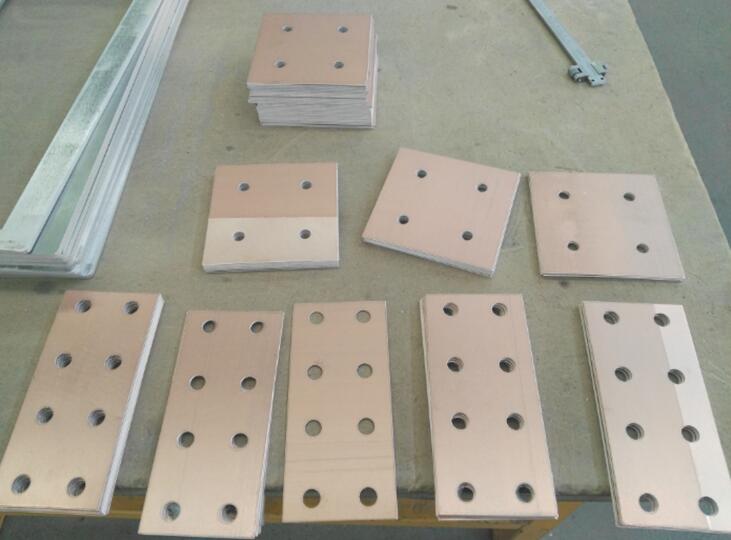1. The purity of copper and aluminum, the volume ratio of copper layer and the bonding strength of the interface are the most critical parameters, which determine its electrical conductivity, mechanical properties, processing performance and use performance.
2. In the conductive industry, in order to meet the needs of conductivity, the applied copper material should meet the requirements of T2 copper in GB/T5231, and the aluminum material should meet the requirements of 1060 aluminum in GB/T3190. In order to ensure the electrical conductivity of the copper-aluminum composite material, it is first necessary to ensure that the materials of the copper composite layer and the aluminum base layer meet the standard requirements.
3. The volume ratio of the copper layer is analyzed by computer finite element analysis, and the volume ratio of the copper layer of the copper-aluminum composite material is 20%, and its cost performance is optimal. At this time, the current carrying capacity reaches 89% of the T2 copper bar. To meet the different needs in industrial applications, the conductivity of the material can be changed by appropriately adjusting the volume ratio of the copper cladding. Generally speaking, the volume ratio of copper cladding should not be lower than 15% and should not be higher than 30%. The higher the volume ratio of copper cladding, the better the conductivity.
4. Interface bonding strength is a basic property of composite materials.

The bonding strength of copper and aluminum is directly related to the applicability and safety of the material. Whether the material is delamination during bending, punching, and shearing, and whether the stress generated by thermal expansion and contraction in areas with large temperature differences will damage the bonding layer, these are directly related to the interface bonding strength. Tests and applications have proved that the interface bonding (shear) strength is greater than 35MPa, which can meet the above application requirements.
Features of bi-metal transition plate:
1. High reliability The thickness of the copper-aluminum transition layer at the junction of the copper-aluminum composite row is 1~2 μm, which not only realizes the metallurgical bonding between copper and aluminum, but also effectively solves the low bonding strength and transition layer resistivity of other composite rows. The problem. The interface bonding strength of the copper-copper-aluminum composite row is greater than 40MPa, and it can withstand the stress generated by long-term, high-frequency quenching and thermal shock without reducing the bonding strength of the material.
2. High conductivity When the copper-aluminum composite bar has a copper volume ratio of 20%, its resistivity is less than 0.0245Ω?mm?/m, and the current carrying capacity can reach 89% of the copper bar. Its temperature rise and short resistance can meet the requirements of low-voltage switchgear. Without changing the structure of the electric control and power distribution equipment, there is no need to re-design, and it is convenient to switch.
3. High cost performance The density of the copper-aluminum composite row is 3.94g/cm?, and the conductivity is 71% of T2 copper. When used under the same conditions, the weight is less than half of pure copper, which has a significant application cost advantage.
4. Good social benefits The application of copper-aluminum bi-metal transition plate can alleviate the shortage of copper resources in my country. It conforms to the policy of "saving copper with aluminum" in the electric power field, which is vigorously promoted by the state, and has good social benefits.











